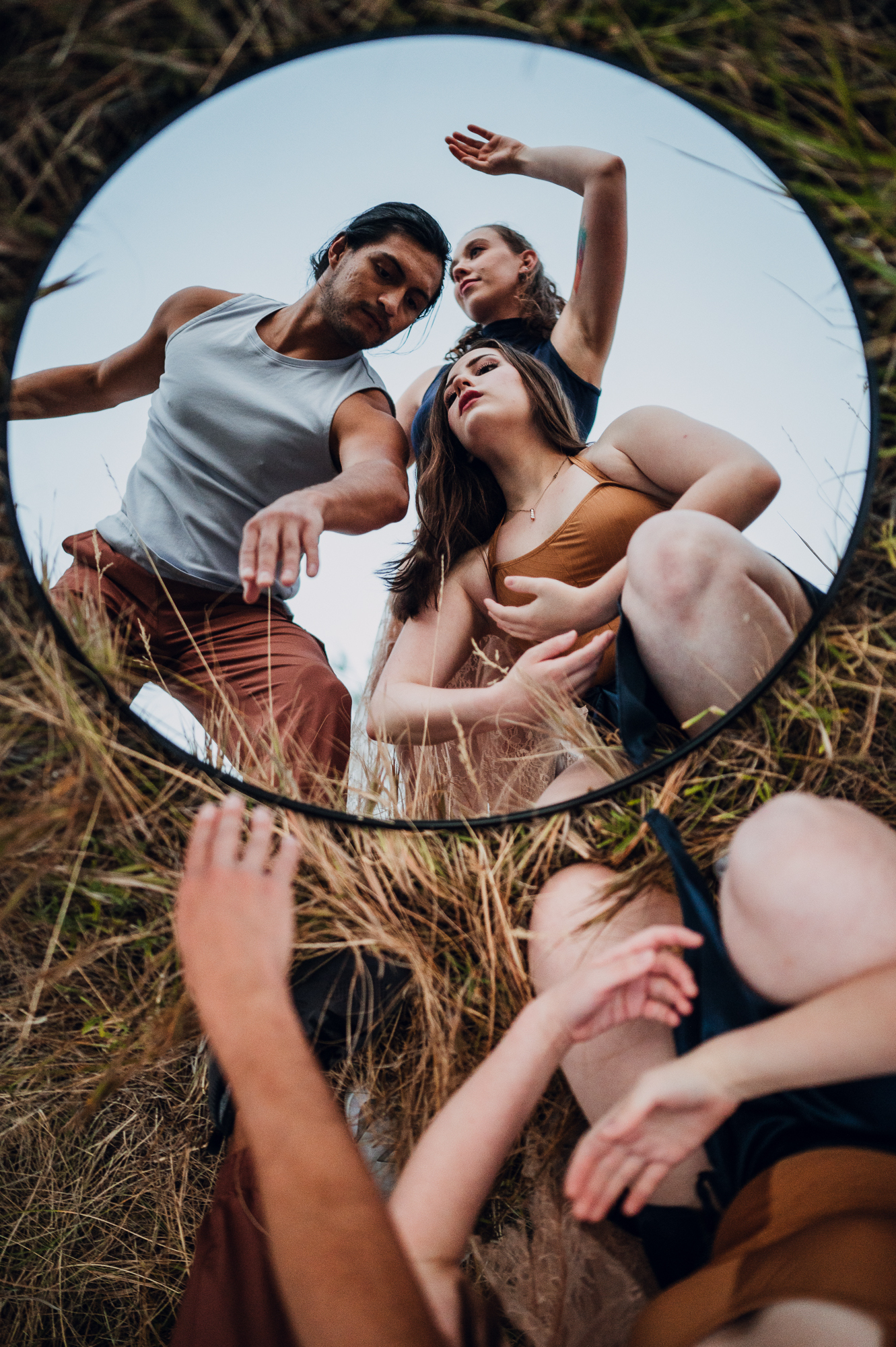
The arts exist in the borderlands, where two or more concepts overlap – the physical and the metaphorical, the emotional and the spiritual, the idea of the thing and the thing itself.
Dance choreographers must take their initial idea or concept and translate it into a performance, moving the idea from an internal realm to an external one. Crossing the border between concept and performance became a tangible exercise for Abby Allison, Maddy Kling, and Jame Fuerte, graduating CSU Dance majors, as they choreographed their senior dance capstones.
The three were inspired to title the show, The Thing Itself after the Adrienne Rich poem, Diving Into the Wreck. In the poem, Rich writes, “the thing I came for: the wreck and not the story of the wreck, the thing itself and not the myth.” At the 2021 Senior Dance Capstone Concert held in December 2021, the three dancers invited the audience to dive deep into the self and explore the sensations of their works, not just a presented story but the metaphorical, emotional, spiritual, and physical elements themselves.
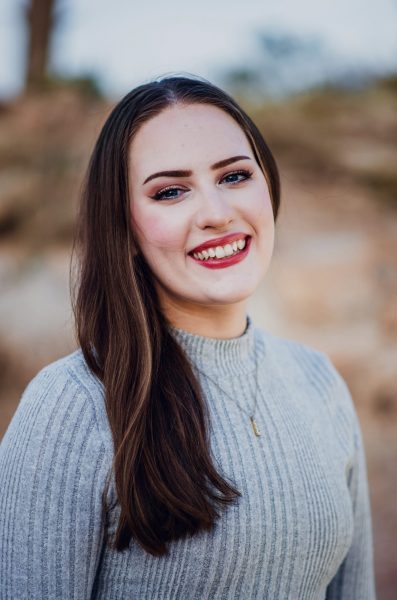
Abby Allison, a double major in theatre and dance, has an innate appreciation of both art forms. This inspired her to take the scripts from three modern plays and adapt them into dances. Allison chose contemporary works to adapt, refreshing the tradition of adapting fairytales into ballet. Her solo, sin/redemption, adapted “Bengal Tiger at the Baghdad Zoo” by Rajiv Joseph. She distilled the concept down to the question, ‘what does it mean to be alive?’
“My solo is much more based in theatrical skills I’ve learned. I’ve used the motives, obstacles, actions, and tactics the Tiger has behind the words in the script to create abstract movement that relays that subtext,” Allison said. This led her to create movement that is slow and curved for contemplation, sharp and rebounding for self-control, while releasing and using momentum for frustration.
In her group piece titled confided/control and regret/satisfaction, Allison’s adaptation of Fefu and Her Friends by María Irene Fornés, and The Chairs by Eugène Ionesco explores the opposites of simplicity and chaos. The initial piece, confided/control, explores stereotypes placed on women falling into, and then breaking, those stereotypes. The latter piece, regret/satisfaction, is about the end of life as it takes a deep dive into how we break away from regret and find satisfaction in simplicity.
There is a duality to all of Allison’s pieces, not unlike the duality in the Rich poem, which explores what it means to go beyond the surface story into the experience of the concept itself.
I learned how to be an individual in my artistry. I came from competitive dance, and it wasn’t about story, intention, or feeling. After taking classes here, I learned that dance is an art for a reason. There is so much more behind a performance than just looking cool. My movement is different from everyone else, and that is a good thing. The professional world wants someone who stands out and is a good person to work with. They can’t be a robot but have to put their heart and soul into creating something that is powerful and special. Until I came here, I didn’t realize dance could be so powerful.” — Abby Allison
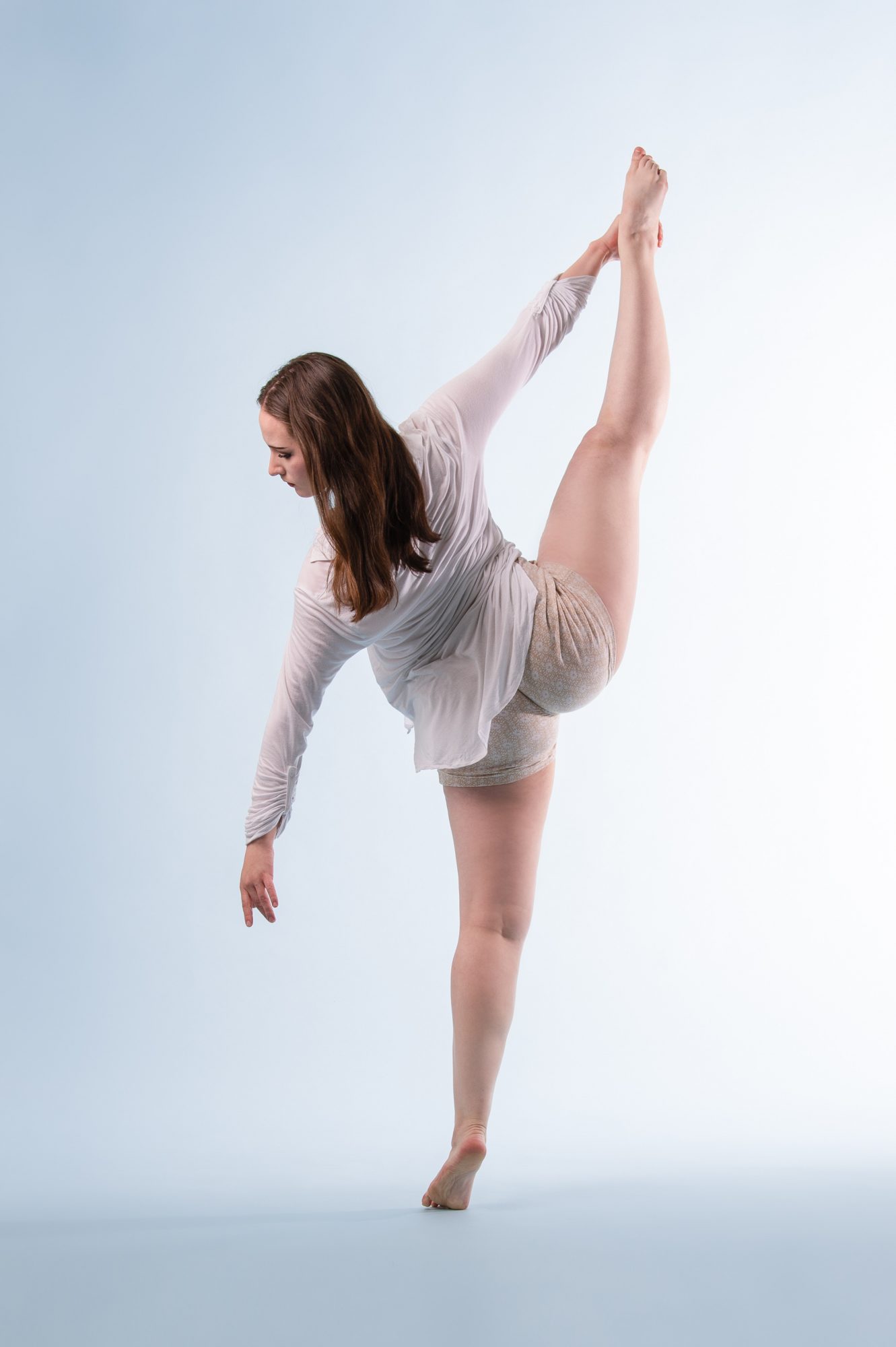
Judy Bejarano, senior instructor of dance at CSU’s School of Music, Theatre, and Dance, said, “This process has given Abby a construct that she can live as she is exploring choreographically. She didn’t do Romeo and Juliet but chose modern plays and themes that set up an interesting structure for her work.”
Allison echoes this sentiment, describing the process of moving from metaphorical concept to the physical choreography of the performance.
“Having a script helps create movement. It is a place to start and gives intention,” Allison said. The process of analyzing subtext and interpreting what else the words could mean, not just what they are, directed her choreography. “Musical cues often influence movement, but a script created by someone else provided material to dissect and influence my favorite movements. It is nice to explore a secret gem in the piece when the moves relate to the script,” she said.
Maddy Kling’s pieces, Waving Goodbye and In Memory dive deep into the personal experience of her brother’s death by cancer. These pieces explore relationships with her brother, dad, mom, and how the family unit dynamic shifts with one less person.
The subject matter of Kling’s choreography is very personal, spanning the anniversary of her brother’s death. She layered the theme with concepts of the ocean, which can be both deadly and renewing. The piece moves from dark waters to a submerged middle, and finally to waves on a beach, which erodes only to reveal beauty in the form of a shell.
“Choreography is so vulnerable,” stated Bejarano. “Maddy is accessing the internal and providing it externally to an audience who may or may not have experienced something similar. It allows the audience to hold their own perceptions and their own story.”
When translating the border between the emotional concept and the physical choreography, Kling asked her dancers to go beyond just connecting to her story and tap into a similarly painful experience for themselves. She asked them to access their own emotions. “If people can see the release and experience the catharsis, then my job is done because that is what I need to feel and what I hope for my audience to feel as well,” Kling said.
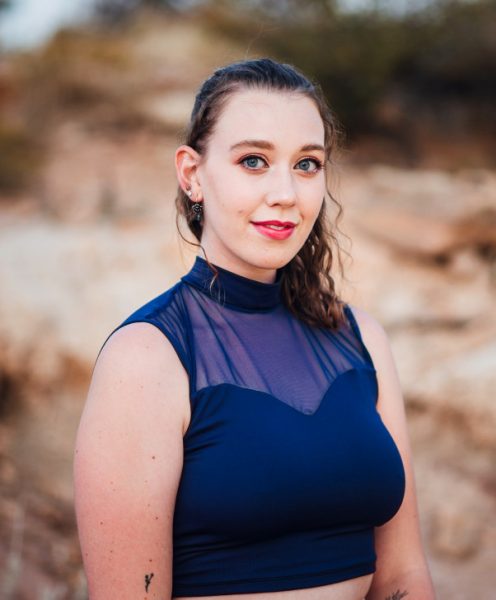
CSU creates confident dancers. We all come from different backgrounds. We support each other and where we’re all going. We help each other find ways to amplify these desires. I am confident in what I want to do because of this support. It is more than just technique; we’ve talked about what we want to do after the program and have the support to pursue that. We have a sense of self.” — Maddy Kling
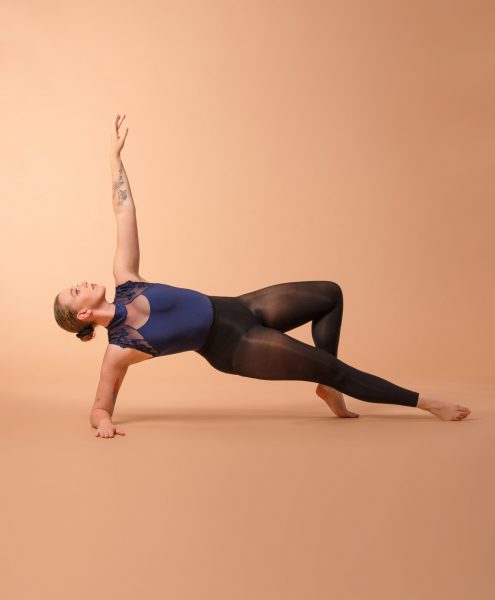
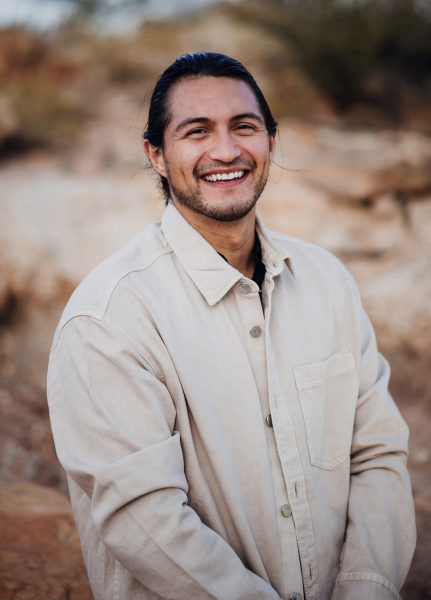
How do choreographers respond to barriers in the border between concept and performance? Jame Fuerte would say “by diving into the wreck,” one of his favorite poems and the inspirational title for the capstone concert.
“In my mind, there are walls we’ve built as defense mechanisms from external society—doubt, shame, perfection. These are the concepts that we must overcome to have a relationship with ourselves and with our dancers,” Fuerte said.
Fuerte said choreographing his pieces One Collage and The Time the Sun Stood Still would not have been possible without the encouragement of Bejarano.
“Judy encouraged me to keep the faith, value the dancers, and my time with them,” Fuerte said. “It is fascinating when you ride the wave of chaos instead of structure. Once you process, after the wave has settled, you must look back at what the wave presented and taught you—emotions and life lessons. That becomes the inspiration to move forward.”
Fuerte initially envisioned his group piece, The Time the Sun Stood Still, with nine dancers and encapsulating all four of his years as a dance major at CSU. Only one dancer signed up, which threw Fuerte’s concept into chaos.
I found my roots at CSU in the dance program – I learned about myself, and I took advantage of everything CSU had to offer, the resource center, the Pride Center, the Native American Cultural Center. I started a non-profit, participated in the Multicultural Undergraduate Research, Art and Leadership Symposium (MURALS), joined the swim team, joined gymnastics.
I was doing a lot on top of school, and the dance program allowed me to explore my emotions in a healthy way. I have connected to communities I wouldn’t have, and I’ve connected to myself in a vulnerable way. I still struggle, but my education has expanded my world beyond anything I thought possible. In addition to education, dance has provided an opportunity to explore my emotions in a healthy way and open my eyes to a life worth living. Now I want to start a studio, join a company, travel internationally, and more. I could take off on dozens of brand-new adventures.” — Jame Fuerte
“Perfectionist walls had to come down,” Fuerte said, "And the perception of what a capstone should be, those were steel and titanium walls.”
With the help of Bejarano, Fuerte shifted to learning through creation—from the idea of the process to the reality of the process. “Jame kept showing up and was present,” Bejarano said. Reshaping his choreography and experimenting with projection and sound design on a smaller group created unexpected dimensions to the piece. Fuerte’s “spiritual dive into the wreck brought something beautiful to the surface,” she added.
The capstone itself is the last boundary the students faced at CSU as they cross from the semi-professional to the professional dance world. Allison, Kling, and Fuerte navigated the concepts presented to them over four years and translated them into tangible moving performances, exploring the depths of internal and external experiences. In doing so, they invited an audience to experience where their own stories overlap with the thing itself.
Navigating Borders
From water to dance, science to film, clay to gender, the liberal arts helps us navigate the borders in our lives that are physical, metaphorical, or cultural.
